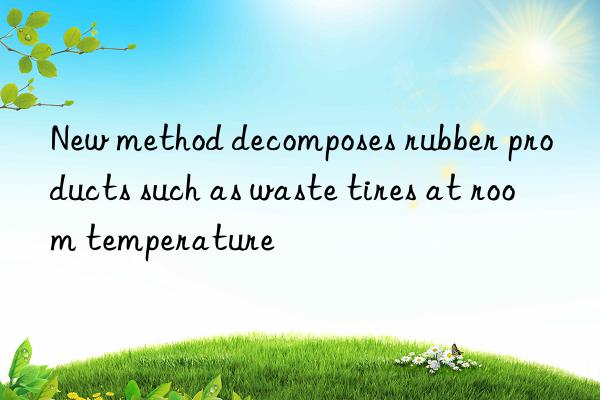
A research team at Durham University developed the A new chemical method that can disassemble rubber products such as waste tires at room temperature. This brings a more green and low-energy consumption method for tire recycling production, and related papers have been published in the journal "Green Chemistry".
The method uses a degradable speed catalyst and uses a chemical process to replace the current energy-intensive method of dismantling tires. The technology could help the tire recycling process, and the paper details how the method works, and could be applied to recycling vehicle tires, used rubber gloves, and other polymer products. The long-chain hydrocarbons and unsaturated carbon atoms in these materials are extremely difficult to recycle and reuse. Traditional waste tire recycling methods include the use of heating and freezing to change the temperature drastically to achieve dismantling and recycling. This method consumes a lot of energy. The rubber formed by recycling also loses the hardness and ductility of the original product, and can no longer be used for the purpose of the rubber before recycling.
The Durham University method, with the help of environmentally friendly chemistry, can restore some of the original properties of these recycled materials and make them competent for their original jobs. For example, waste tires can be used to make new tire materials after being recycled by this method, and the cross-metathesis reaction is used to decompose the polymers in the rubber to make viscous polymer liquids that can be used for reshaping and molding, and there is no decline in performance . The Grubbs' catalyst used in the method can be used to decompose the polybutadiene in the rubber, break the double bonds in the network, and form small molecular substances. If produced in chain blocks, this material is also capable of forming quite versatile rubber crumbs. Grubbs catalysts are easily synthesized and commercially available.



 微信扫一扫打赏
微信扫一扫打赏
